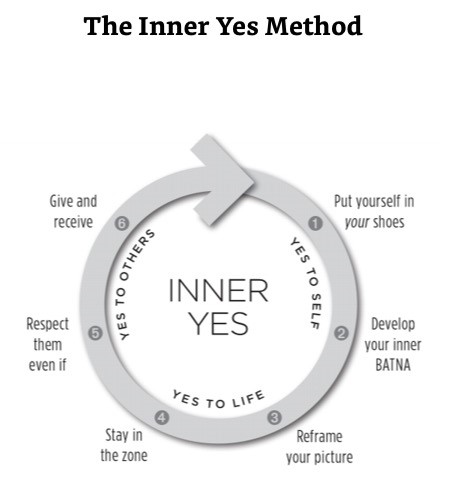Getting to Yes With Yourself
You cannot get to "yes" with others until getting to "yes" with yourself first. This statement is the central argument of William Ury's Getting to Yes With Yourself: And Other Worthy Opponents, his 2015 sequel-intended-as-a-prequel to his 1981 international bestseller on negotiation, Getting to Yes: Negotiating Agreement Without Giving In. In Getting to Yes With Yourself, Ury reflects on his more than 30 years of experience as an expert mediator and adviser to identify a framework for "the most important negotiation we ever conduct – the negotiation with ourselves." In the book, he outlines a six-step method to take the challenges that make us our own worst opponents and transform them into tools that will make us our own best allies. As a female cardiology trainee constantly hearing about the critical importance of mastering the skill of negotiation, I appreciated this book more as offering a set of life skills as opposed to a toolkit for professional advancement.
My first takeaway from the book was the inevitable nature of negotiation in our daily lives. For example, survey-based research on physician lifestyles has repeatedly shown significant differences in the division of domestic labor between women and men. In one study, women spent 8.5 more hours per week on domestic activities than men, even after adjustment for work hours, spousal employment and other factors. In another study of married physicians, women spent more than 1.5 hours more per day on household activities and child care than their male physician spouses. From getting children to school on time to deciding what is for dinner, these domestic activities comprise a significant part of the daily negotiation burden for women. Add to this the stresses of managing a busy consult service, arguing with insurance companies over prior authorizations, and advocating for promotion in a specialty in which there are no female cardiology chiefs in the top 40 ranked cardiology programs, it would seem that female cardiologists certainly get a lot of practice with negotiation. However, Ury writes that despite what we think about our behaviors, we usually sabotage ourselves by reacting to these situations in ways that do not serve our interests. By embracing an adversarial "win-lose" mindset, we judge ourselves, blame others, fear scarcity of opportunity and reject others when we are rejected. These attitudes prevent us from getting to "yes" with ourselves.
Ury's "inner yes" method has six steps:
- Put yourself in your shoes
- Learn to act from a mental and emotional place of perspective, calmness and self-control.
- Listen to yourself with respect and positive attention.
- Ask yourself what you want most, and what your deepest motivations are.
- Develop your inner BATNA
- Own your life, relationships and needs.
- Make a commitment to stop blaming for shortcomings in your life and assume the responsibility to make change.
- Reframe your picture
- Reframe each difficult conversation or disagreement from an adversarial confrontation to a cooperative exchange.
- Stay in the zone
- Accept the past, attend fully to the present and abandon worry about the future.
- Always look for the present opportunity to steer the conversation toward a resolution.
- Respect
- Acting respectful breeds respect from others, and the same goes for inclusion and acceptance.
- Practice the opposite of what you initially feel like doing in the face of rejection.
- Give and receive
- By taking, recognize that you are claiming value only for yourself. By giving, you are creating value for yourself and others.

Each of the book's chapters dissects these steps in more detail, accompanied by authentic examples from Ury's own life. While certainly admirable, I found Ury's personal examples of conflict resolution hard to relate to. Instead, I reflected on challenging situations from my own personal or professional life as I contemplated each step. In doing so, I realized that Ury's "inner yes" method intersects nicely with ACC's ethos supporting its Diversity and Inclusion and Quadruple Aim initiatives.
Ury suggests a couple of ways to use the "inner yes" method – as part of your preparation for any important conversation (ideally refreshing yourself the day before), or as part of your approach to daily life and not just to special situations. While not as dogmatically structured as other professional self-help books, Getting to Yes With Yourself is a quick and easy read that offers a constructive prescription of self-acceptance and self-respect on the way to becoming a win-win-win negotiator.


